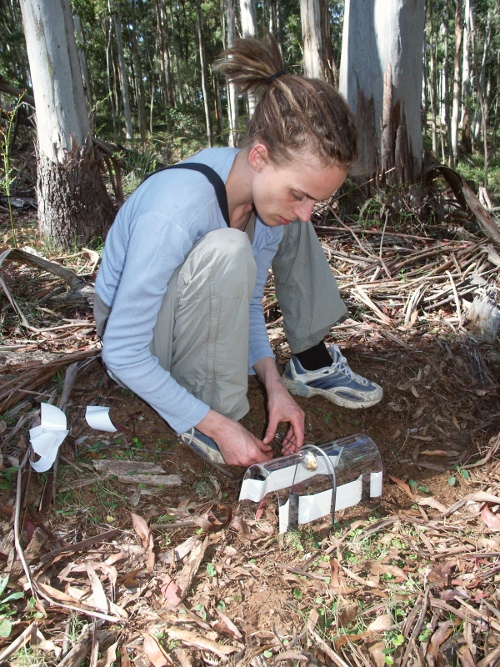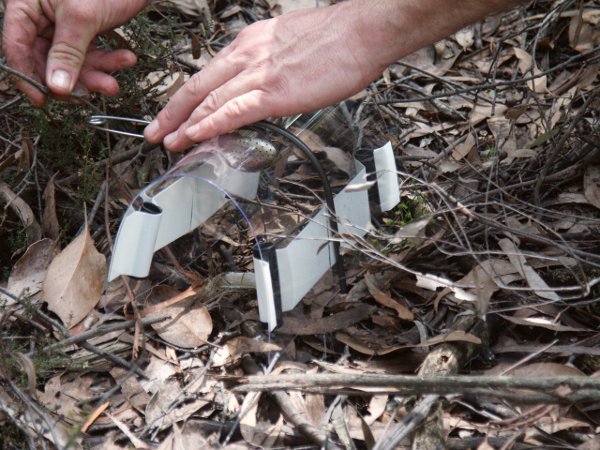Arboreal mammal habitat associations in the Wombat State Forest report

Volunteer installing ground hair tube (photo Tibor Hegedis)
In 2004 members of the Wombat Forest community obtained funding from the Department of Sustainability & the Environment (DSE) to conduct research into aspects of forest biodiversity. The Arthur Rylah Institute for Environmental Research (ARI) was asked to carry out a study, working with the community group, to contribute to the understanding of the fauna-habitat associations in mature forest areas of Wombat State Forest.
This project was developed to look at the relationship between mature forest in the Wombat State Forest and the arboreal mammals that inhabit this forest type. There is no old growth forest in the Wombat having been cleared by 1900. Mature forest develops at about 80 - 100 years.
Thirty sites, each one hectare were selected in large blocks of continuous mature forest dominated by Messmate or gum-barked species.
The project was very exciting, involving over 100 members of the community and a relationship was developed with experienced scientists. Scientists from the Arthur Rylah Institute for Environmental Research (ARI) oversaw the project, established the sites, carried out the spot lighting and prepared the report.
One way of establishing fauna presence is to use hair tubes which contain a food source and double-sided tape to capture hair. The hair is then analysed to determine the species. The community constructed the hair-tubes and put them on the sites. This was a massive undertaking, with all tubes needing to be taped, placed on site, collected and peeled. Careful records and cleanliness were essential. Sealed plastic bags were used to ensure that there was no contamination of the samples.

Ground hair tube (photo Tibor Hegedis)
The next phase of the project also carried out by the community involved vegetation surveys where all trees with a diameter of over 40cm were measured and categorised and the density of understorey trees and shrubs was rated.
The report, produced by the ARI points to a relationship between the presence of Greater Gliders Petauroides volans and peppermint species (Eucalyptus radiate & Eucalyptus dives), gum-barked Eucalyptus species and stags.
Wombat Forestcare would like to acknowledge ARI scientists Phoebe Macak, Richard Loyn (Acting Research Director) & Ryan Chick, whose support for the project far exceeded all expectations.
